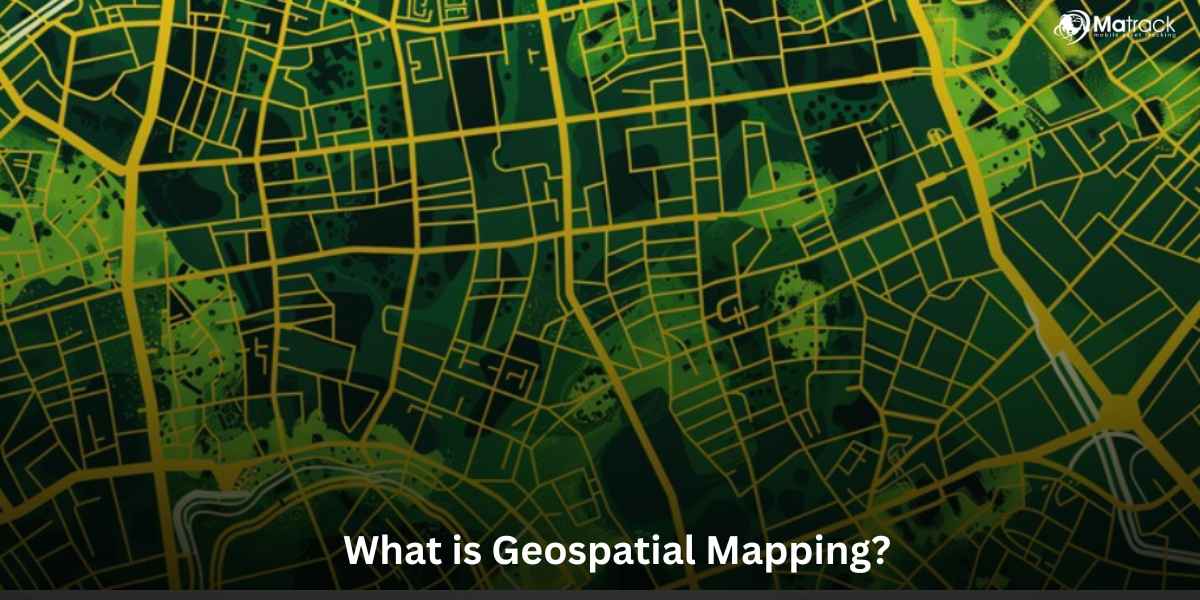Key Takeaways:
- Tracking Technology uses tools like GPS, RFID, and sensors to capture real-time location, movement, and behavior.
- Each tracking type supports different environments, with accuracy ranging from centimeters indoors to kilometers online.
- These systems improve logistics, safety, and decision-making by increasing visibility and reducing delays or losses.
- Matrack enhances trucking operations by combining real-time tracking, driver behavior monitoring, and compliance tools in one platform.
What Is Tracking Technology?
Tracking Technology is a digital monitoring system that uses sensors, transmitters, and software to identify, locate, and communicate the position or behavior of physical or virtual subjects. Tracking systems integrate time, motion, and environmental data.
It records movement events, stores activity history, and transmits real-time coordinates. This technology supports logistics operations, healthcare monitoring, asset security, customer analytics, and automation infrastructure.
Why Is Tracking Technology Important?
Tracking Technology plays a key role in improving accuracy and helping people make better decisions faster. It gives teams the ability to see what’s happening in real time, so they can respond with confidence when it matters most.
In supply chains, it brings much-needed transparency by showing where things are at any given moment. That visibility helps cut down on lost inventory and keeps everyone more accountable.
In places like hospitals or manufacturing floors, tracking keeps people and equipment where they need to be. Whether it’s a GPS keeping track of a crew in the field or a sensor flagging a machine that needs attention, it keeps operations running smoothly.
How Tracking Technology Works?
Tracking Technology gathers location data using tools like GPS, RFID, or motion sensors. That information is sent to a system that organizes it into a live view of movement or position.
Different technologies rely on different signals, whether it’s satellite input, radio frequency, or local networks. The system interprets those signals to track whatever is being monitored with precision.
What Are The Different Types Of Tracking Technology?
Tracking Technology includes 7 primary types, each built for specific environments and accuracy needs. These types rely on signals like satellites, radio waves, or local networks to track people, assets, or data in real time.
1. GPS Tracking
GPS Tracking uses satellite signals to calculate outdoor location. It connects with multiple satellites to triangulate coordinates with 5 to 10 meters of accuracy.
Use Cases:
- Fleet tracking for commercial vehicles
- Navigation in GPS-enabled devices
- Outdoor fitness and activity monitoring
2. RFID Tracking
RFID Tracking uses electromagnetic fields to identify and track tagged objects. It operates through passive or active tags and readers, with accuracy ranging from a few centimeters to several meters.
Use Cases:
- Warehouse inventory management
- Hospital patient identification
- Retail product security systems
3. BLE and Wi-Fi Tracking
BLE and Wi-Fi Tracking estimate device location using signal strength. BLE beacons detect nearby smartphones or wearables, while Wi-Fi calculates distance from routers.
Use Cases:
- Analyzing customer movement in stores
- Monitoring room occupancy in offices
- Delivering location-triggered promotions
4. Cellular and GSM Tracking
Cellular Tracking uses mobile tower signals to approximate device position. It calculates distance based on signal delay and strength, with accuracy between 50 and 150 meters.
Use Cases:
- Locating emergency callers
- Tracking lost or stolen phones
- Providing location data for ride-hailing apps
5. UWB and Ultrasound Tracking
UWB and Ultrasound Tracking provide high-precision indoor positioning. UWB uses radio pulses, and ultrasound uses sound waves to reach accuracy down to 10–30 centimeters.
Use Cases:
- Motion tracking in AR/VR headsets
- Guiding autonomous robots in factories
- Real-time location of hospital equipment
6. IP and Network Tracking
IP Tracking locates users by analyzing digital addresses over the internet. It maps IP addresses to broad regions, with accuracy between 10 and 50 kilometers.
Use Cases:
- Delivering region-specific web content
- Detecting fraud in online platforms
- Restricting access to geo-blocked services
7. Sensor-Based Tracking
Sensor-Based Tracking monitors motion using built-in sensors like accelerometers and gyroscopes. These sensors estimate movement, steps, or orientation without needing external signals.
Use Cases:
- Tracking steps in fitness wearables
- Auto-rotating smartphone screens
- Detecting falls in eldercare devices
Comparing Different Types Of Tracking Technologies
| Tracking Type | Accuracy | Cost Level | Suitable Locations | Limitation |
| GPS | 5–10 m | Moderate | Outdoor | Fails indoors |
| RFID | 1 cm – 3 m | Low to High | Indoor warehouses | Limited to tagged items |
| BLE / Wi-Fi | 1–10 m | Low | Indoor offices, retail | Affected by signal interference |
| GSM / Cellular | 50–150 m | Low | Urban, suburban | Low resolution |
| UWB / Ultrasound | 10–30 cm | High | Indoor industrial | High infrastructure needs |
| IP / Network | 10–50 km | Very Low | Online environments | Masked by VPNs or proxies |
| Sensor-Based | Varies | Moderate | Mobile and wearable | Drift errors over time |
What Are the Privacy Concerns?
Lack of User Consent
Many tracking systems operate without clear user permission. Devices can collect and transmit data by default, often without the user being aware or given a meaningful choice to opt out.
Data Misuse and Third-Party Sharing
Tracking data is often stored, sold, or shared with external parties. This creates risks of profiling, unauthorized marketing, or discrimination based on movement patterns or behaviors.
Continuous Surveillance
Tracking systems can lead to constant surveillance in workplaces, cities, or homes. This undermines privacy by monitoring not only location but also routines, associations, and time spent in certain places.
Weak Data Security
Poor encryption, insecure networks, or outdated devices can expose tracking data to breaches. If location histories or personal identifiers are leaked, it can lead to stalking, theft, or targeted scams.
Identity and Location Linking
When tracking data is tied directly to a user’s identity, it creates a full picture of their behavior. This deep visibility makes the data extremely valuable, and dangerous if misused.
Inconsistent Legal Protection
Privacy laws vary by country and industry, leaving gaps in enforcement. In some regions, tracking data isn’t classified as sensitive, which reduces accountability for how it’s handled.
How To Address These Privacy Risks?
- Always request clear, informed consent before activating any tracking system
- Use encrypted systems that store the minimum required data
- Regularly audit who has access to the data and for what purpose
- Anonymize tracking records wherever identity isn’t essential
- Ensure compliance with data protection laws like GDPR, CCPA, or local equivalents
How Matrack Fleet Tracking Technology Improves Your Trucking Business?
Matrack’s fleet tracking system gives you a real-time view of where every truck is and what it’s doing. That kind of visibility makes it easier to plan routes, respond to delays, and keep customers updated without making extra calls.
The platform tracks driving behavior like speeding, harsh braking, or long idle times. This helps you coach drivers more effectively and cut down on fuel waste and vehicle wear.
It also handles compliance by integrating ELD features and maintenance alerts into one dashboard. That means fewer violations, less downtime, and more time keeping your trucks on the road.

